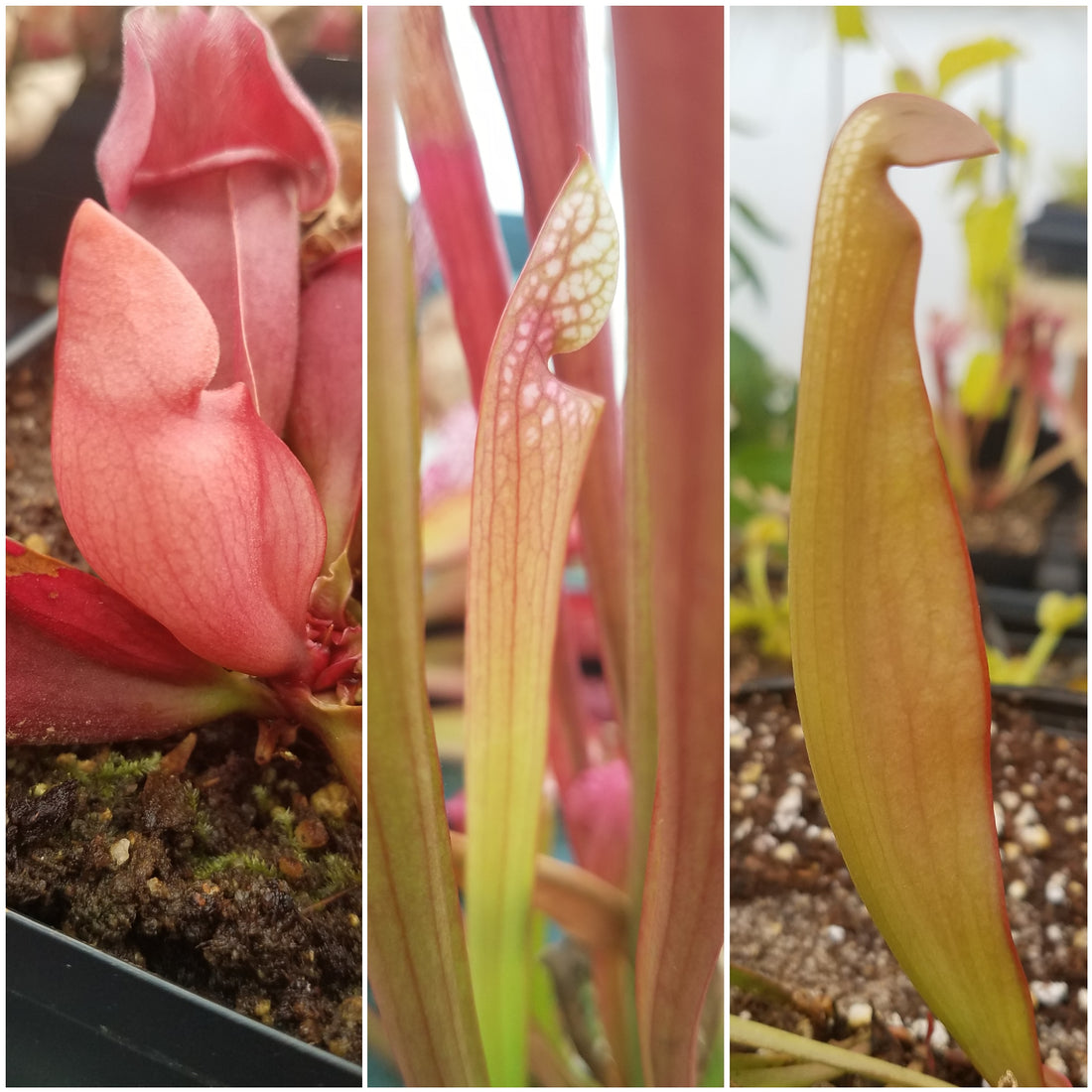
Dormancy FAQ
Share
If you have been researching and learning about carnivorous plants, you might have come across the idea of dormancy. We get a lot of questions every year about dormancy and dormant plants so I thought I would try to answer some of the most frequently asked questions.
What is dormancy?
- It is when a plant will either stop or slow growth during unfavorable conditions. Think of it like plant hibernation.
Do all cps go through dormancy?
-Not every plant will go through a dormant period and not every plant's dormancy is the same. Generally tropical cps like nepenthes, some drosera, some pinguicula and heliamphora do not need any type of dormancy and can be grown under the same conditions all year. Flytraps, Sarracenia and temperate species of Drosera/ Pinguicula- even Mexican Pinguiculas are a different matter.
What does dormancy look like?
- Most people ask this in reference to flytraps and Sarracenia since they are similar. Both of them will lose most of their beautiful summer and autumn traps/ pitchers. The flytrap will replace those robust traps with short, ground hugging traps that are slow to function (if they trigger at all). The plants are doing their best to conserve as much energy as possible during the cold months. In the spring, both flytraps and Sarracenia will begin to "wake up" and start producing new growth.

Dormant Dionaea muscipula
- Temperate Droseras and Pinguicula can also experience dormancy. Their strategy for survival is to die back to a hibernacula. The hibernacula is a tight winter bud can resemble a small cluster of fern fronds. Some examples of temperate Drosera include filiformis, intermedia, binata, and rotundifolia. There are only a few Pinguicula that are cold hardy, examples include vulgaris, macroceras, and grandiflora.

Hibernacula of D filiformis
- Mexican Pinguicula is a bit different. They go through a dry winter dormancy where their large, carnivorous leaves die off and are replaced by a small, tight rosette of succulent leaves. 
Above is P laueana during their succulent phase
What triggers dormancy?
- Generally speaking it is the falling temperatures in autumn coupled with a decreased photoperiod.
Can I skip dormancy?
- The short answer is yes if the plants are grown indoors under lights. It is considered ill advised though for the long term health of the plant. Most of the time it is fine to skip the first year's dormancy on young seedlings of Sarracenia and flytraps.

Small Dionaea muscipula divisions
How should l care for my plants during dormancy?
- If you live in zone 8 or higher, you do not need any special care. Just put your plants outside in a bright area where they can receive ample light. I like to put them on a tray so that the media in the pot never completely dries out. Try to keep them from becoming waterlogged though as they need much less water in winter than they do during their growing season. Sarracenia and flytraps can tolerate cold temperatures, even down to freezing as long as they are protected. If you live in zone 4-7, you can still overwinter your plants outside but you need to take extra care to protect them. It is best to plant them in a bog as small pots are too susceptible to freezing. Many people will place their bog in a protected area of their property so that it is away from harsh winds. They will also mulch over the plants with leaves or pine needles to keep them insulated.

S 'Dana's Delight' during our first bit of snow for the season
-Mexican Pinguicula do well on a sunny windowsill all year long. They need a dryer dormancy whenever they are in their succulent state.
Do I need to do anything to prepare for spring?
-This is a great time to repot your temperate plants! I like to go through and do this during January and February to get them ready for the next growing season. I remove any brown traps or pitchers so the new growth will have room to emerge. I also check the rhizome for any signs of rot (if any of the rhizome is brown and mushy remove it until only healthy tissue remains).

Old pitchers removed from Sarracenia in preparation for spring
I hope I answered some questions about dormancy. Please email me if you have any others and we can expand this list! Happy growing 💚
